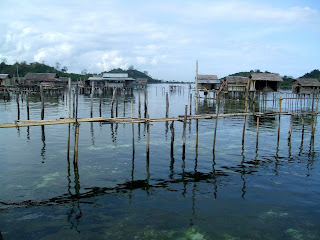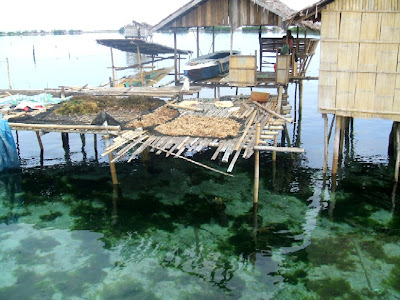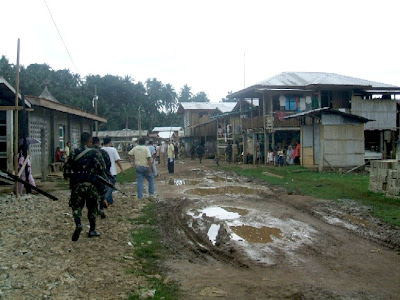
Hello and welcome to my blog (BLOG: an internet diary or journal).
It gives me great pleasure to share with you an extraordinary trip I took as a guest filmmaker -- a trip back to my past, back to my mother's homeland, and into the world of the Consuelo Foundation. I wanted to tell of my experiences but also wanted to add some personal thoughts and factual information you might find interesting. It' s the journalist in me, I have to document! And it's the filmmaker in me, I have to show you through pictures.
After I completed my trip, it took me nearly two months to complete this blog. There was so much to say, too much to remember. Though lived in time, the blog will be timeless, forever telling this story for as long as it lives here on the Internet.
Many of you have asked and wondered what I was doing traveling to Manila and Muslim Mindanao,the southernmost part of the Philippines. It was a gift, a huge gift! Thanks to the Consuelo Foundation and their Hawaii and Philippine staff and board, a new world opened to me and I was very happy to document their visit to this fascinating area known for its dangers and armed conflicts. As you will see, we traveled safely. Read on, and you will see why.
So.... look at some of my blog today, and some tomorrow, but do come back. View my photos; read my thoughts. Read a little, or read alot. Or swallow the whole whale! I invite you dear family and friends to enter my profound and inspiring journey! Enjoy!!
 SUNDAY, THE DAY BEFORE. Our welcome began with a board dinner at the foundation's condo and a splendid Filipino meal by housekeeper Lina. The condo sits on the 25th floor and overlooks the business district of Makati. Surrounding Makati and its tall buildings are Manila suburbs, some very old and some very, very new. Makati is my old stomping ground. It felt good to renew my connection to where I attended high school at the Amerrican School back in the late 60s. Our family had a 4-and-a-half year stay in Manila when my Hawaii-born, Filipino American father was stationed here as a U.S. military advisor. Fasten your seat belts! We're off and RUNNING!
SUNDAY, THE DAY BEFORE. Our welcome began with a board dinner at the foundation's condo and a splendid Filipino meal by housekeeper Lina. The condo sits on the 25th floor and overlooks the business district of Makati. Surrounding Makati and its tall buildings are Manila suburbs, some very old and some very, very new. Makati is my old stomping ground. It felt good to renew my connection to where I attended high school at the Amerrican School back in the late 60s. Our family had a 4-and-a-half year stay in Manila when my Hawaii-born, Filipino American father was stationed here as a U.S. military advisor. Fasten your seat belts! We're off and RUNNING!MONDAY:
Briefing at the Consuelo Foundation offices.
 President and CEO Geri is the one who invited me to travel with the board to observe the work of their non-profit partners in Mindanao.
President and CEO Geri is the one who invited me to travel with the board to observe the work of their non-profit partners in Mindanao.The board members making this trip are briefed by two consultants on Mindanao's socio-economic and peace and order situation. Specifically we are given the historical and current situations in the areas of Sulu, Basilan
 and Zamboana City, also know as areas in the ARMM, Autonomous Region in Muslim Mindanao.
and Zamboana City, also know as areas in the ARMM, Autonomous Region in Muslim Mindanao. 
ARMM HISTORY: The southern Philippines has a long history of conflict that stretches back to the arrival of Islam in the 14th century. First colonized by Spain in the 16th century, it was later colonized by the United States in the late 1890s. Followers of Islam, called Moros by the Spanish, evaded Spain's domination for 300 years. They launched their war for national liberation in 1972 calling themselves Bangsamoro, or Moro nation and declaring these lands as ancestral domains. After a failed peace agreement with the Manila government in 1976, another agreement in 1996 gave the predominant Muslim areas a degree of self-rule by setting up their region up as ARMM, Autonomous Region in Muslim Mindanao. The history of AARM is long and complicated. Once dominated by Muslims, it is now dominated by Christian settlers who came south for land and opportunity. Deep-seated prejudice divide these populations. And for almost 40 years, the people of AARM have lived with armed conflict led by rebel separatists/terrorist groups, including Abu Sayyef, which held strong in Jolo and Basilan since the early 1990s. They are best known for bombings and kidnappings and links to Al-Qaida.
SOME THOUGHTS: As we read up on AARM on the flight over, I was struck by the similarities of their struggle for independence and that of Native Hawaiians. Ancestral lands. Colonizers. Settlers and migrations to Hawaii. Marginalization and displacement of the indigenous population. The big difference of course, no kidnappings, no bombings, no armed struggle in Hawaii! We should be thankful for peace in our home and the willingness of Hawaiians to find non-violence solutions! Thanks to the lasting and powerful legacy of Queen Lili'uokalani, Hawaii's last reigning monarch who til this day call her people to peaceful ways.

LUNCH WITH THE CONSUELO FOUNDATION STAFF.
In this Manila office, there are some 30 staff here. During my two-week stay in the Philippines, I interacted with almost all of them on some level. Some were on the advance teams setting up our arrangements for when we arrived at certain destinations, others were program officers traveling with us to introduce us to partners funded by Consuelo.


And then we were off to the airport and an hour and a half flight to Zamboanga City. The consultant who briefed us on the Sulu province came with us.

Here is our Sulu consultant Vic with friend Haji standing near the Sulu sea at our Lantaka hotel. Haji was with us throughout our trip, as were other local escorts.

SOME THOUGHTS: I always thought of Zamboanga City as a city I would want to visit one day. I am sure my first impressions are fairly meaningless and a longer stay would be needed to truly appreciate this city. But for now, on this first night, one strong memory are the tuk tuks (motor bikes with side cars) driving around at night with no lights (saving their batteries) and somehow safely and skillfully maneuvering the streets like a ballet in darkness. By day, the city is alive, and these days being election time the streets are littered with "vote for" signs.








 ZAMBOANGO FACTS:
ZAMBOANGO FACTS:









 SOME THOUGHTS:
SOME THOUGHTS: 



























 Dinner that night was under the stars and featured seafood delicacies such as Sulu crab. The night was kind. It was cool and the fan in my room added to the relief from the long day's heat. ZZZZZZZZZZZZZZZZZZZZZZ
Dinner that night was under the stars and featured seafood delicacies such as Sulu crab. The night was kind. It was cool and the fan in my room added to the relief from the long day's heat. ZZZZZZZZZZZZZZZZZZZZZZ 